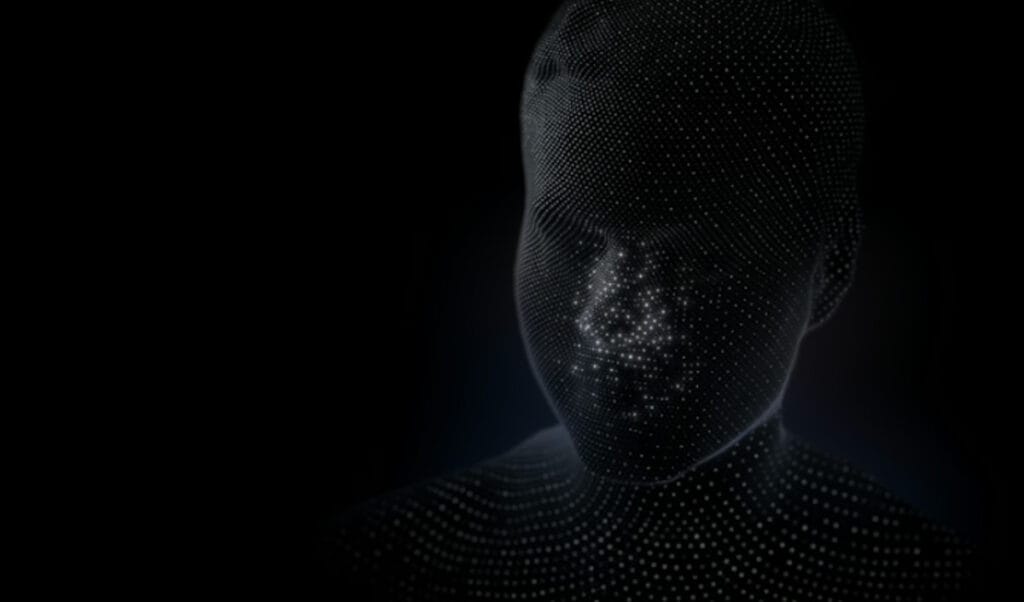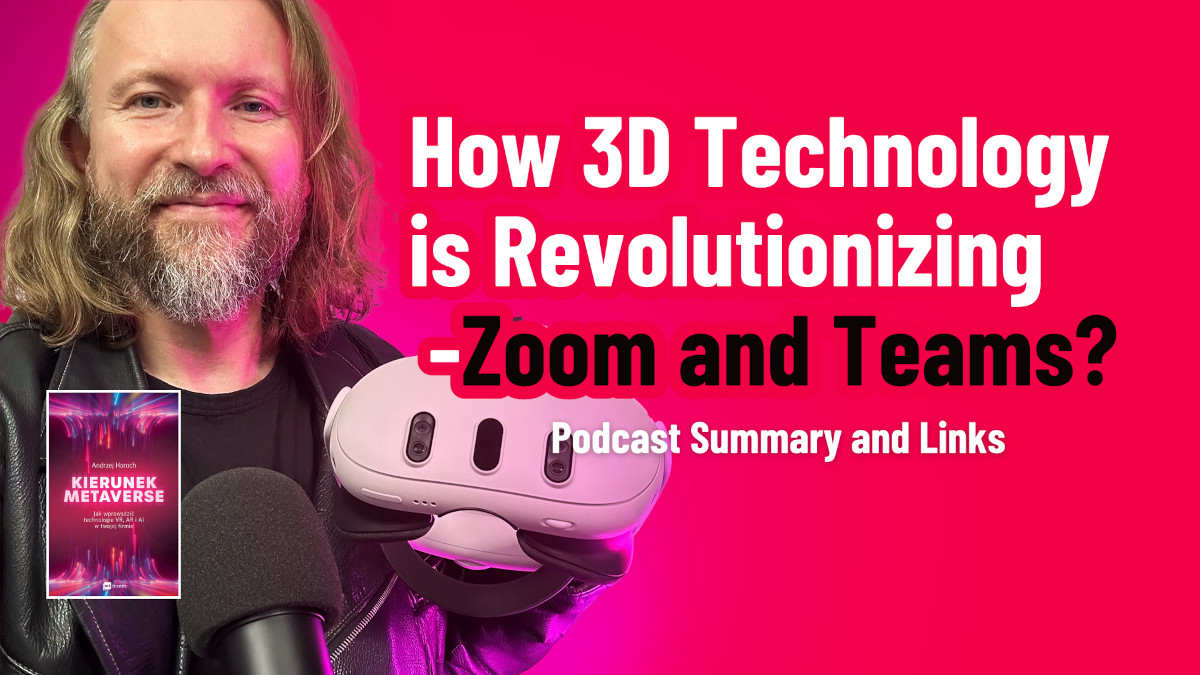Breakthrough in Business Meetings: How 3D Technology is Revolutionizing Zoom and Teams
Dear Innovators,
Welcome to the latest edition of the “Innovators” newsletter—your guide to the world of VR, AR, and Metaverse technologies for business. This edition summarizes the live programs I host, where I share proven methods for executing innovative projects alongside visionaries from leading corporations. The theme of this episode is “From Emoticons to Avatars.”
My name is Andrzej Horoch. I am the co-owner of ConnectedRealities.eu and the author of the book “Kierunek Metaverse.” My passion and profession revolve around creating and implementing breakthrough VR, AR, and Metaverse technologies in large companies.
You can watch the episode “From Emoticons to Avatars” as a video on our YouTube and LinkedIn profiles. Links can be found at the end of the newsletter. Below is a summary of the episode.
In the latest episode of the Innovators podcast, titled “From Emoticons to Avatars,” we explore how VR/AR and AI technologies are shaping our digital identities and ushering us into a new era of digital interactions. Three-dimensional, realistic avatar-based digital meetings are poised to revolutionize how we work and connect with others. Although we are still at the beginning of this journey, there are already specific solutions available that enable such meetings. However, the price of virtual reality glasses is still prohibitive, competing with the most expensive computers on the market.
Key topics covered in the podcast:
- The history of avatars—how we transitioned from expressing emotions via SMS to 3D avatars that mimic our facial expressions and emotions.
- How can we utilize avatars?
- How 3D technology is revolutionizing Zoom and Teams.
- Why avatars remain an underappreciated aspect of digital transformation.
- Breakthrough in business meetings: How 3D technology is revolutionizing Zoom and Teams—a summary.
Breakthrough in Business Meetings: How 3D Technology is Revolutionizing Zoom and Teams – A Summary.
The Evolution of Digital Identity
In the 1980s, the term “avatars” began to be used to describe digital characters representing users in virtual environments. However, we’ve come a long way from avatars being primarily associated with gaming. In the digital world, we need tools to express emotions beyond words—something that physical gestures, facial expressions, and clothing style accomplish in the real world. We need the same during digital meetings. From simple emoticons, which helped express emotions in digital communication, we’ve evolved to complex three-dimensional avatars that will serve as our means of communication in virtual worlds.

Realistic Representations in the Digital World
Modern avatars allow users to create detailed, realistic representations of themselves, opening the door to more authentic interactions in digital spaces. This is crucial because realistic avatars enable digital meetings that mimic real-life interactions, transforming how we approach work and everyday communications.

Practical Applications of Avatars
Avatars are no longer limited to gaming and entertainment. They are now used in education, training, and business, enabling virtual meetings and presentations with a new dimension. Technologies such as Apple Vision Pro show how simple and realistic these interactions can become, adding a third dimension to our digital meetings. Imagine transitioning from 2D video calls on Teams or Zoom to their 3D virtual equivalents, where we can see each other with a greater sense of presence, as if we’re in the same room, thanks to the three-dimensional nature of avatars—no matter where participants are in the world. Once such glasses become more accessible, for example, as part of subscription models like today’s smartphones, the shift to 3D meetings will become widespread. Businesses are currently in a prime position to pioneer these solutions.

Breaking Digital Barriers
The evolution from video calls to fully virtual 3D meetings demonstrates how metaverse technology “breaks the glass” separating us from digital content on our phones and computers. This is not so much a revolution as it is the natural evolution of our communication and interaction needs. It’s the next step—from phone calls, to video calls, to three-dimensional meetings with realistic avatars.
Avatars and the Metaverse open new possibilities for realizing our digital identities, making our digital interactions more intuitive and realistic. I encourage you to listen to the full episode of the Innovators podcast, “From Emoticons to Avatars,” to explore this fascinating topic and see how these technologies can change the future of work and business.

Hey! I’m thrilled by your interest in VR/AR and the Metaverse in business. Thank you for your attention, and I invite you to the next episode of Innovators. I’ll talk about how we went from video games to the virtual economy—and what it means for business. See you there!
What else is worth knowing?
- You can purchase my book “Kierunek Metaverse”, available in stores like Empik. You can choose from a printed version, audiobook, or e-book. I greatly enjoy the reviews I receive from you.
- Here you can sign up for tests of our VR solutions tailored to the specific needs of the companies you work for. We can send you VR glasses or meet in person for an inspirational session. I highly recommend it!
- On September 7th, I will be a speaker at TEDxLublin, held at the Old Theater in Lublin. Wish me luck, and if you’re in the area, you’re welcome to join. More information is available on Facebook.
- You can also invite me to conduct an inspiring workshop on VR/AR/Metaverse technologies, innovation implementation, and employee engagement in change. Write to me on LinkedIn.
- Let’s get to know each other better. Listen to my dynamic interview on RMF FM, where I talk about the secrets of effective innovation work, explain what the Metaverse is, and how new technologies work.


